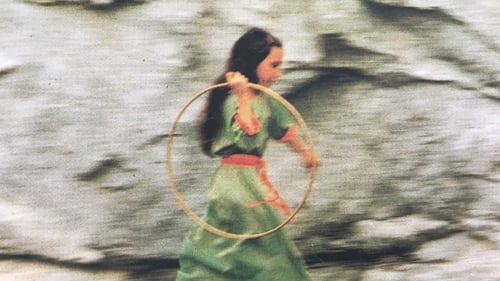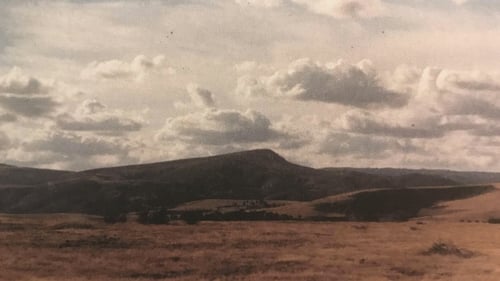Margarida Cordeiro
Birth : , Mogadouro
History
Margarida Cordeiro (born 1939) is a Portuguese psychologist and film director from Mogadouro. The art concepts developed by her and her husband António Reis are called The School of Reis.
Description above from the Wikipedia article Margarida Cordeiro, licensed under CC-BY-SA, full list of contributors on Wikipedia.

Art Direction
Marking a stylistically and philosophically turn away from the earlier features, The Sand Rose is Reis and Cordeiro’s most abstract, conceptual and literary work. The film’s collage structure gathers texts from multiple sources – including Kafka and Montaigne – and crafts a world of theatrical artifice far from the documentary inspired naturalism of Ana and Trás-os-Montes. Reis and Cordeiro’s least known film has lingered in obscurity and never recovered from the unfairly negative reviews that resulted in its severely limited release. Reis died less than two years later, just as he and Cordeiro were about to begin an ambitious adaptation of Juan Rulfo’s Pedro Parámo. - Harvard Film Archive

Editor
Marking a stylistically and philosophically turn away from the earlier features, The Sand Rose is Reis and Cordeiro’s most abstract, conceptual and literary work. The film’s collage structure gathers texts from multiple sources – including Kafka and Montaigne – and crafts a world of theatrical artifice far from the documentary inspired naturalism of Ana and Trás-os-Montes. Reis and Cordeiro’s least known film has lingered in obscurity and never recovered from the unfairly negative reviews that resulted in its severely limited release. Reis died less than two years later, just as he and Cordeiro were about to begin an ambitious adaptation of Juan Rulfo’s Pedro Parámo. - Harvard Film Archive

Screenplay
Marking a stylistically and philosophically turn away from the earlier features, The Sand Rose is Reis and Cordeiro’s most abstract, conceptual and literary work. The film’s collage structure gathers texts from multiple sources – including Kafka and Montaigne – and crafts a world of theatrical artifice far from the documentary inspired naturalism of Ana and Trás-os-Montes. Reis and Cordeiro’s least known film has lingered in obscurity and never recovered from the unfairly negative reviews that resulted in its severely limited release. Reis died less than two years later, just as he and Cordeiro were about to begin an ambitious adaptation of Juan Rulfo’s Pedro Parámo. - Harvard Film Archive

Director
Marking a stylistically and philosophically turn away from the earlier features, The Sand Rose is Reis and Cordeiro’s most abstract, conceptual and literary work. The film’s collage structure gathers texts from multiple sources – including Kafka and Montaigne – and crafts a world of theatrical artifice far from the documentary inspired naturalism of Ana and Trás-os-Montes. Reis and Cordeiro’s least known film has lingered in obscurity and never recovered from the unfairly negative reviews that resulted in its severely limited release. Reis died less than two years later, just as he and Cordeiro were about to begin an ambitious adaptation of Juan Rulfo’s Pedro Parámo. - Harvard Film Archive

Set Decoration
Ana combines straight-on documentary technique with unexpected flights of dreamlike surrealism. The title character, played by Ana Maria Martins Guerra, is a young Portuguese girl who lives with her grandmother. Through their relationship, we are witness to the Cycle of Life: Grandmother takes care of granddaughter until granddaughter is obliged to do same for grandmother. The scenes between the two protagonists are counterpointed with impressionistic camera compositions based upon famous religious paintings. Ana was impressive enough to earn an American art-house release, a rarity for independently produced Portuguese films.

Editor
Ana combines straight-on documentary technique with unexpected flights of dreamlike surrealism. The title character, played by Ana Maria Martins Guerra, is a young Portuguese girl who lives with her grandmother. Through their relationship, we are witness to the Cycle of Life: Grandmother takes care of granddaughter until granddaughter is obliged to do same for grandmother. The scenes between the two protagonists are counterpointed with impressionistic camera compositions based upon famous religious paintings. Ana was impressive enough to earn an American art-house release, a rarity for independently produced Portuguese films.

Producer
Ana combines straight-on documentary technique with unexpected flights of dreamlike surrealism. The title character, played by Ana Maria Martins Guerra, is a young Portuguese girl who lives with her grandmother. Through their relationship, we are witness to the Cycle of Life: Grandmother takes care of granddaughter until granddaughter is obliged to do same for grandmother. The scenes between the two protagonists are counterpointed with impressionistic camera compositions based upon famous religious paintings. Ana was impressive enough to earn an American art-house release, a rarity for independently produced Portuguese films.

Writer
Ana combines straight-on documentary technique with unexpected flights of dreamlike surrealism. The title character, played by Ana Maria Martins Guerra, is a young Portuguese girl who lives with her grandmother. Through their relationship, we are witness to the Cycle of Life: Grandmother takes care of granddaughter until granddaughter is obliged to do same for grandmother. The scenes between the two protagonists are counterpointed with impressionistic camera compositions based upon famous religious paintings. Ana was impressive enough to earn an American art-house release, a rarity for independently produced Portuguese films.

Director
Ana combines straight-on documentary technique with unexpected flights of dreamlike surrealism. The title character, played by Ana Maria Martins Guerra, is a young Portuguese girl who lives with her grandmother. Through their relationship, we are witness to the Cycle of Life: Grandmother takes care of granddaughter until granddaughter is obliged to do same for grandmother. The scenes between the two protagonists are counterpointed with impressionistic camera compositions based upon famous religious paintings. Ana was impressive enough to earn an American art-house release, a rarity for independently produced Portuguese films.

Editor
Reis and Cordeiro’s undisputable masterpiece exploded the meaning and possibilities of ethnographic cinema with its lyrical exploration of the still resonant myths and legends embodied in the people and landscapes of Portugal’s remote Trás-os-Montes region.

Producer
Reis and Cordeiro’s undisputable masterpiece exploded the meaning and possibilities of ethnographic cinema with its lyrical exploration of the still resonant myths and legends embodied in the people and landscapes of Portugal’s remote Trás-os-Montes region.

Idea
Reis and Cordeiro’s undisputable masterpiece exploded the meaning and possibilities of ethnographic cinema with its lyrical exploration of the still resonant myths and legends embodied in the people and landscapes of Portugal’s remote Trás-os-Montes region.

Director
Reis and Cordeiro’s undisputable masterpiece exploded the meaning and possibilities of ethnographic cinema with its lyrical exploration of the still resonant myths and legends embodied in the people and landscapes of Portugal’s remote Trás-os-Montes region.

Sound
Jaime, a poem of suffering and loneliness, describes the existence and pictorial work of a man isolated in a psychiatric hospital.

Assistant Director
Jaime, a poem of suffering and loneliness, describes the existence and pictorial work of a man isolated in a psychiatric hospital.

Editor
Jaime, a poem of suffering and loneliness, describes the existence and pictorial work of a man isolated in a psychiatric hospital.




